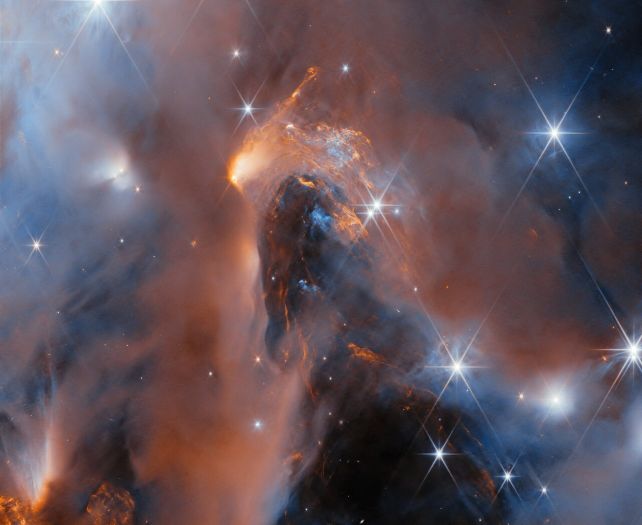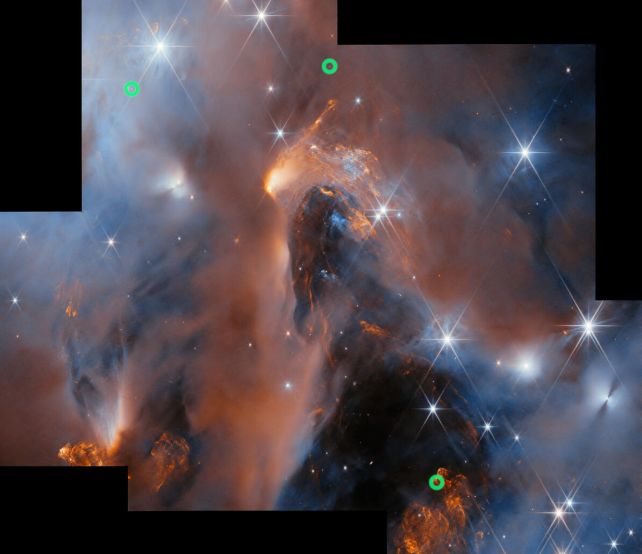JWST Detects Six Rogue Planets Wandering Alone in Space
Then there is a common perception that planets are always in some sort of an orbit around their host star. However, space challenges these expectations and, at times, object do not follow the laws that may encompass their actions.
Six large planet-like bodies, wandering independently in the interstellar medium are detected by astronomers using the James Webb Space Telescope (JWST). These objects were discovered in the star-forming region called NGC 1333 in the Perseus theater.
Astrophysicist Adam Langeveld from the Johns Hopkins University says, “We are really pushing the limit in star formation. Is this object like a young Jupiter but could have turned into a star? That’s a question important for every star and planet formation. ”
Stars typically form from the top-down: a mass of gas and dust in space forms a compact body from materials of rotating disc and gets in state with increased pressure and temperature that begins nuclear reactions of hydrogen synthesis.
Planets, however, are supposed to be formed from the bottom up from what is remaining in the disk after the birth of the star. First there exists electrostatic accretions followed by gravity making a core and then a mantle.
The distinction between these formation processes is not sharp, and therefore, researchers aimed the nebula NGC 1333 at JWST. The telescope’s unprecedented sensitivity at infrared wavelengths allowed them to investigate the faintest members of this young star cluster to answer a key question in astronomy: If atoms are invisible and yet are capable of forming structures like stars can objects be made even tinier?
Astrophysicist Ray Jayawardhana of Johns Hopkins University adds, “Now, it has been found that the lowest-mass objects that form like stars have similar masses as giant exoplanets.

So according to the estimates, there may be billions of ‘lonely’ planets in the Milky way. Some of these may have coalesced together in the normal way but were then expelled from their parent star systems as the result of the effects of powerful gravity. Others perhaps were born in a similar fashion to stars and were later stripped of their companions.
Now brown dwarfs which are born from the same processes as stars but which never accumulated enough mass to ignite hydrogen burning are as massive as 13 to 85 Jupiter’s and burn with the light of deuterium. According to theoretical models of the manner in which planets form, no planet, formed by core-accretion, should exceed 10 Jupiter’s mass.
When observing JWST six objects with masses between five and ten that of Jupiter were discovered and it was initially assumed that they were formed by gravitational collapse especially when disks around these objects were observed.
Jayawardhana adds, “Our observations confirm that nature can produce planetary mass objects in at least two ways: from the contraction of gas and dust clouds such as in the formation of stars and disks around young stars such as in the formation of Jupiters.

Most strikingly, no PMs smaller than five Jupiters were found indicating that this may be a lower mass boundary for these objects. These results suggest that these objects could be as much as 10 percent of the cluster analyzed and raise interesting possibilities and uncertainty about where stars, planets, and their moons fit.
The University of St Andrews astrophysicist Aleks Scholz goes on to say, ‘Such small bodies with the masses similar to that of the giant planets may themselves possibly form planetary systems such as this one but on a much smaller scale than the Solar System.
Do not forget to share your opinion with us to provide you with the best posts !



0 Comments